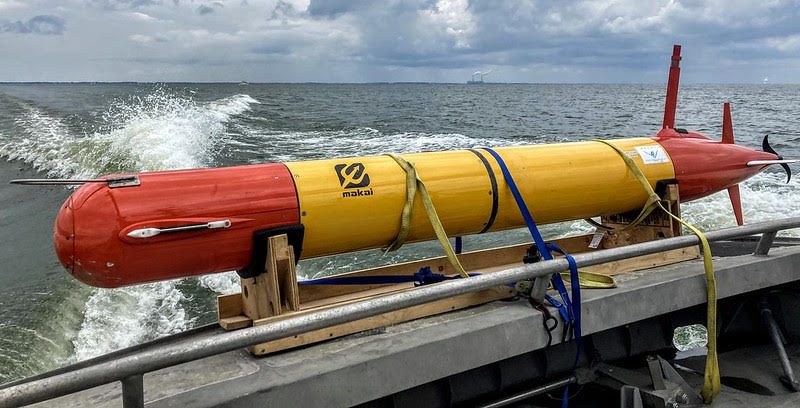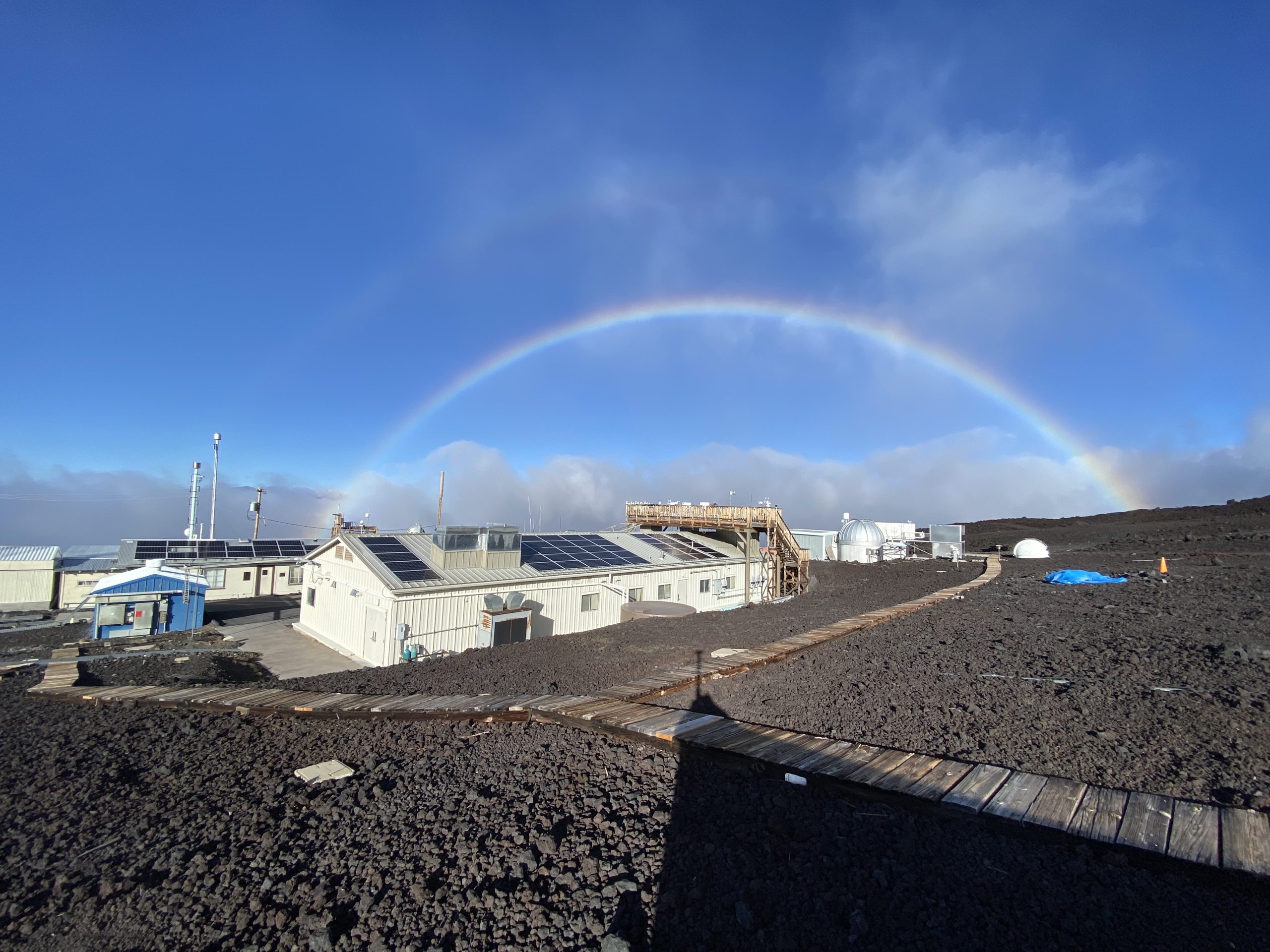Findings suggest aircraft emissions may alter the stratosphere at mid-high latitudes
Scientists have long recognized that, on average, air pollution in the troposphere, or lower atmosphere, is worse in the Northern Hemisphere than in the Southern Hemisphere. That’s because nearly 90 percent of the global population, and a majority of urban and industrial pollution sources, are located north of the equator.
Now, an analysis of data gathered during a groundbreaking NOAA-NASA airborne research mission has found that the northern stratosphere, the layer right above the troposphere, is more polluted as well. Only in this case, the scientists believe emissions from a specific source – aviation exhaust – may be a main culprit.
In a study published in the journal Atmospheric Chemistry & Physics, scientists from NOAA’s Chemical Sciences Laboratory and CIRES report that measurements of very small particles and trace gases in the lower stratosphere taken aboard the NASA DC-8 research aircraft during the Atmospheric Tomography Mission (ATom) showed clear differences between the north and the south.
“What we observed were two very different stratospheres,” said lead author Christina Williamson, a CIRES researcher working at NOAA Chemical Sciences Laboratory. “We found a more pristine atmosphere in the Southern Hemisphere, and a Northern Hemisphere impacted by man-made pollutants.”
Sitting just above the troposphere, the stratosphere is home to the ozone layer, which protects the surface from harmful ultraviolet radiation. The stratosphere is also of particular interest to scientists because of its role in influencing climate.
Small but mighty
Atmospheric particles, also called aerosols, are microscopic bits of liquid or solid material suspended in the air that can be emitted directly or transported from the lower atmosphere (like soot or dust). Aerosols can also be formed in the atmosphere through the condensation of gases, a process that can produce particles a mere 3 – 12 nanometers (nm) in diameter. Even though these particles are tiny, they can alter the balance between sunlight reaching the Earth’s surface and heat escaping back to space.
During the ATom mission, a three-year, multi-agency effort to understand the impacts of human-produced air pollution on the environment, scientists logged four complete global circuits from the Arctic to the Antarctic over the remote oceans. Over the course of each six-week leg, the DC-8 flew an up-and-down pattern from 500 feet above the wave tops to over 40,000 feet in altitude, while instruments continuously sampled the atmosphere for various pollutants. Williamson and colleagues consistently found that stratospheric aerosols were more abundant in the Northern Hemisphere, especially the smallest aerosols, which were 4 to100 times more prevalent than they were south of the equator.
The link to aviation
One of the most common sources of these smallest particles is sulfur dioxide, a gas naturally emitted by the ocean, and also a byproduct of burning fuels that contain sulfur. Sulfur dioxide can readily react and condense in the cold air to form fine droplets of sulfuric acid, the primary source of the acid rain that caused widespread damage to forests in the northeastern U.S. in the mid-20th Century.
Commercial aircraft typically cruise at altitudes within the lower stratosphere and are known to emit small particles and sulfur dioxide gas in their exhaust. Air traffic is largely concentrated in the Northern Hemisphere, and has been steadily increasing in recent decades, leading to a 23 percent increase in sulfur dioxide emissions between 2014 and 2018.
The research team examined the potential connection between their measurements and air traffic using a database that calculates emissions and their distribution based on global aircraft movements and fuel consumption. “While more research will be needed to prove a direct link between stratospheric aerosol imbalance and aviation, this study clearly shows human activity has created substantially different conditions in the lower stratosphere of the Northern and Southern Hemispheres,” said NOAA scientist Charles Brock, a co-author of the paper.
NOAA’s Chemical Sciences Laboratory has recently begun a multi-year research initiative, the Earth’s Radiation Budget (ERB) project, to better understand the composition of the stratosphere and how stratospheric aerosols can influence how much heat is absorbed by the atmosphere.
The implications of Williamson’s findings are particularly important in light of the increase in global aviation and the potential for a significant new stratospheric pollution from the planned increase in rocket launches for satellite constellations and space exploration. Computer models currently struggle to reproduce the size and number of aerosols in this region of the atmosphere. The new research suggests that in order to get an accurate picture of the current state of the stratosphere and predict how future stratospheric emissions will affect climate, models will have to accurately account for different aerosol sources and characteristics in the northern and southern stratospheres.
“These observations highlight another way that human activity has altered the composition of the atmosphere that we need to be accounting for in climate models,” Williamson said. “And illustrate how much uncertainty remains about aerosol sources and the details of the current aerosol distribution in the stratosphere.”
For more information, contact Theo Stein, NOAA Communications, at theo.stein@noaa.gov.



